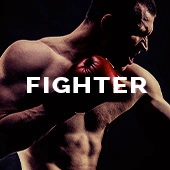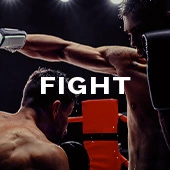by David P. Greisman
On a night when Gennady Golovkin had once hoped to face another middleweight, one of the best challenges he’s faced in years instead came from a welterweight.
That’s not to criticize Golovkin, but rather to credit Kell Brook.
Brook deserves credit, not just for taking the fight with Golovkin but also for taking the fight to Golovkin. Too many other 160-pound fighters have their own reasons not to face the best in their own division. They mostly want more money to get into the ring with Golovkin. It doesn’t matter to them that they may not make as much without him. Nor does it matter to them that they would make even more were they to face Golovkin and beat him.
Instead, they worry about being rewarded for the risk. They say they can beat him, but then want a payday that will, well, compensate them for what they will lose when they lose. They worry about what happens if they try and fail, and because of that they fail to try.
“They offered me $1.5 million, which is what? To go in someone’s back yard,” middleweight titleholder Billy Joe Saunders told British boxing reporter Kugan Cassius back in March, explaining why he turned down a fight with Golovkin. “It’d be different if I’m not the champion. Alright, [David] Lemieux done it, but look where Lemieux is now: scratching his arse with no belt and no ranking.”
Golovkin was once in negotiations to face middleweight contender Chris Eubank Jr. on Sept. 10 at the O2 Arena in London. Eubank’s team was asking for bizarre terms that couldn’t be accepted — not from Golovkin’s side, but rather from his own promoter, Eddie Hearn. Instead, Hearn called Brook.
Hearn had been working on making a unification bout between Brook and fellow welterweight titleholder Jessie Vargas. But when the opportunity arose to face Golovkin this past Saturday instead, Brook quickly accepted. A 147-pound fighter was willing to do what a 160-pounder wouldn’t — for the same reward, but with even greater risk.
Some fighters take their time to get comfortable fighting one weight class above where they were before. Brook had just two months to jump up two divisions to take on the most dangerous, most powerful, most skilled and most accomplished fighter there.
He was nonetheless confident; fighters at the highest levels cannot allow themselves to be paralyzed by doubt or fear. He believed bringing his body down to welterweight drained him, both physically and mentally. He felt he would be stronger with more leeway on the scales. He was heavier than Golovkin in the weeks before the fight. That didn’t mean as much as how he looked at the weigh-in. He was on weight and muscular, not the contrasting situation some run into of being simultaneously flabby and undersized.
His battle with the scales was easier than ever. That didn’t mean his battle with Golovkin was going to be easy.
Brook didn’t have to fight a perfect fight, but he would need to be fast, smart and — most importantly — durable. A boxer who does nearly everything right can still feel leather rearranging his exterior and reorganizing his interior.
Despite the extra bulk on his frame, Brook retained enough quickness and mobility to evade many of Golovkin’s hooks and crosses in the opening minute. But he was soon pushed back to the ropes, where Golovkin landed a left hook, stepped back, thrust out a jab and followed with a flurry that included a hook to the body and another to the head. Brook grabbed ahold of Golovkin. They separated again, forcing Brook back to work.
He wasn’t just there to make Golovkin miss. He needed to land, too. His speed and control of distance allowed him to counter with jabs and power shots, and to lace punches through and around Golovkin’s guard. An uppercut bobbled Golovkin’s head in the final minute of the second. It was the most eye-catching shot of the round. It wasn’t the most damaging.
That’s because Brook’s best round also was the round that led to him losing.
In the second, one of Golovkin’s shots broke Brook’s right orbital bone, raising swelling around the eye.
“I could see three or four of him out there in this right eye,” Brook said afterward.
Brook repeatedly pawed at the eye in the third round. Golovkin either sensed the injury or knew that he needed to respond to what had happened in the second round. Perhaps it was both. He said afterward that he’d wanted to make the boxing match into a street fight. He was more aggressive, increasing the pressure. The unstated goal was to make Brook uncomfortable, rendering him less effective.
Even if Brook were seeing triple, he often was still hitting the right “Triple G.” Out came combinations in the latter half of the third. It was brave enough to face Golovkin when you’re healthy, even braver to try to fend him off when you’re not.
Golovkin transitioned from one strategy to another, a more deliberate approach rather than a devastating attack. He believed that he could take Brook’s punches but that Brook couldn’t take his. The statistics weren’t important. Brook was slightly outlanding Golovkin in terms of power shots through three, but Golovkin’s power was more damaging. Golovkin didn’t need to cut the tree down with one swing. He could chop until Brook was weakened, bit by bit, no longer able to stand it.
The fourth round was slower. Brook didn’t land as much of note beyond a couple of good counters. It wasn’t a terrible round for Brook, but it wasn’t along the lines of what he had been trying to do in the preceding three.
The bell rang, and Brook motioned once again at his eye as he walked back to the corner. His trainer, Dominic Ingle, waved him forward. Brook sat. Ingle draped a towel over the top and sides of Brook’s head and spoke into his left ear.
“I’m watching every moment,” Ingle said at one point. “I’m watching every moment.”
“If I don’t see Kell Brook, that’s it,” he said a little later.
Ingle sent Brook back out for the fifth. He kept watching.
Twenty seconds in, Golovkin noticed Brook’s back approach the ropes. He threw a right to the body to stop Brook’s leftward movement. He sent a left to the head, a right to the body, another left to the head, a flush right cross upstairs and then a left hook to the body. Brook tried to move, and Golovkin continued to punch. Brook evaded a few, then stuck his arms out at his sides, a claim that he wasn’t hurt.
He also pawed at his eye a few more times.
A few shots from Brook at mid-ring failed to stem the attack. Golovkin brought him back to the ropes and punched more. Nothing was wobbling Brook. Ingle didn’t need to see that happen. With one minute and 19 seconds left in the round, he stepped up to the ring apron and waved a white towel in the air.
Referee Marlon Wright, observing the action, didn’t see Ingle behind him. Golovkin threw, some hitting their mark, some made by Brook to miss. Finally, with one minute and 8 seconds left, Ingle threw the towel down to the fighters’ feet.
Golovkin stopped, and Wright jumped in.
It may have seemed premature at first to many of those watching, particularly as they may not have known the extent of Brook’s injury — although Paulie Malignaggi, working the British broadcast, wondered aloud about it. His own orbital had been shattered against Miguel Cotto back in 2006.
Brook again put his arms out to his side, though this time because he didn’t want the bout to be over. His face was broken, but not his will.
“A fight of this magnitude, it should’ve carried on,” Brook said afterward. “I had so much more to give. … I was starting to settle into the fight. I think I would’ve took over the middle to last part of the fight.”
But he also understood why Ingle made the decision to protect him.
“Dominic Ingle has seen me probably from nine years old coming through,” Brook said during HBO’s post-fight interview. “He was watching from the outside. I don't know what was going through his mind. But me, as a warrior, I wanted to carry on. Knock me out. Knock me out.”
“It was the right decision,” Brook said at another point, speaking with Sky Sports. “I can fight another day. I was getting caught, and getting caught. It could’ve ended up seriously bad.”
Fighters often have the mindset of going out on their shields. Fans too often expect that. It’s not always the best choice. Israel Vazquez remained on his stool with a broken nose in his first fight with Rafael Marquez, aware that he had much less of a chance of winning in his current condition. He healed and returned for the rematch, which he won.
Brook’s brave stand wasn’t wholly a no-lose situation. He would’ve been credited with a huge upset and benefited from a huge upside had he won, while a defeat would’ve been recognized as coming against the world’s best middleweight, someone who was seen as having a significant size advantage.
Except taking a loss meant taking damage, which would’ve taken away from what could come next. Brook wasn’t going to return to 147; he’ll likely vacate his world title in that division soon. He’s not going to continue at 160 either. He’ll instead move to 154. It’d do him no good to be damaged goods.
He suffered a fifth-round technical knockout. It’s impressive that he lasted until then. Brook fought multiple rounds with a broken orbital bone, continued to take punishment and continued to resist for as long as he could. The fight was being taken from him physically, and yet he didn’t want to be done without being done for.
Except he didn’t need to suffer a knockout or be injured even worse to have a badge of honor. He can take pride in knowing that he went in with the world’s best 160-pound fighter and put forth a respectable challenge.
That’s more than too many middleweights are willing to attempt. And that’s more than many of those who did try were able to do.
“Fighting Words” appears every Monday on BoxingScene.com. Pick up a copy of David’s book, “Fighting Words: The Heart and Heartbreak of Boxing,” at http://bit.ly/fightingwordsamazon or internationally at http://bit.ly/fightingwordsworldwide. Send questions/comments via email at fightingwords1@gmail.com


